The Ashborn was probably THE most sophisticated, modern, and technically-advanced banjo of the early minstrel period (about mid-1830s to 1860). English-born guitarmaker, James Ashborn, established his mechanized instrument factory, in Connecticut, in the late 1840s. He produced thousands of high quality private-labeled guitars, to the better NYC music houses – such as: Wm. Hall & Son, Firth, Pond & Co. and Wm. A. Pond & Co. – until his operation closed, in 1864.
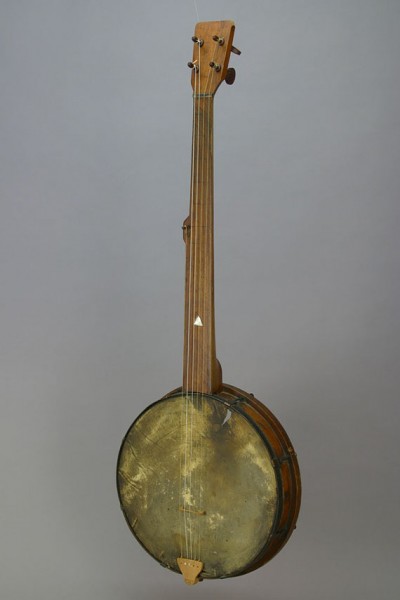
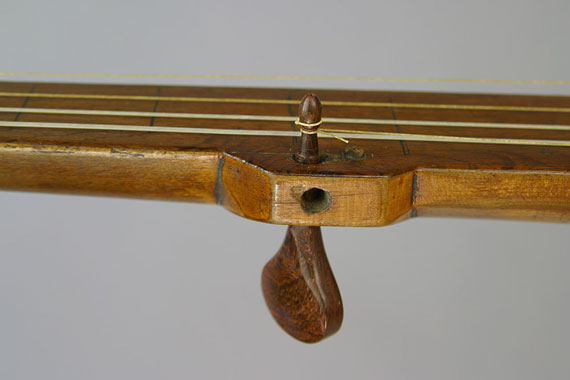
While the instruments made by William Boucher, in the late 1840s, are considered the first “production” banjos (multiples of a specific design, made in batches) — they tend to be admired mostly for aesthetic reasons. As do many of
the handmade “folk-art” banjos of the Minstrel Era. The typical Ashborn banjo was not ornate, nor designed to be a “nostalgic” or “primitive” stage-prop. It was a high-quality, instrument for professional musicians – and is STILL capable of holding-its-own on the stage, today. (Which where I first saw and heard one – in the hands of Bob Winans.)
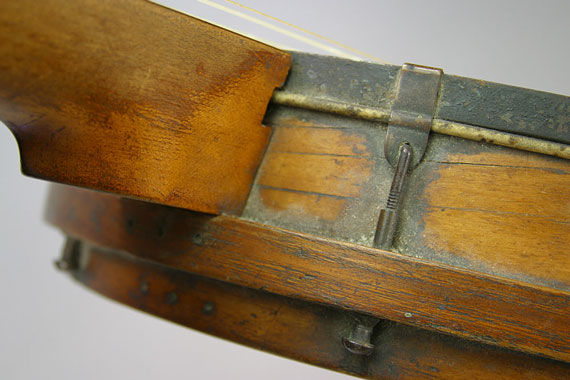
Ashborn banjos have an aesthetic of simple elegance – similar to the Martin guitars of the
1840s, and they use a similar spliced joint for the peghead. The Ashborn was the first banjo to carry a patented feature. Its 1852-patented tuning peg has a large-diameter bearing surface, to provide better friction – and a small-diameter string post, to provide more accurate tuning.
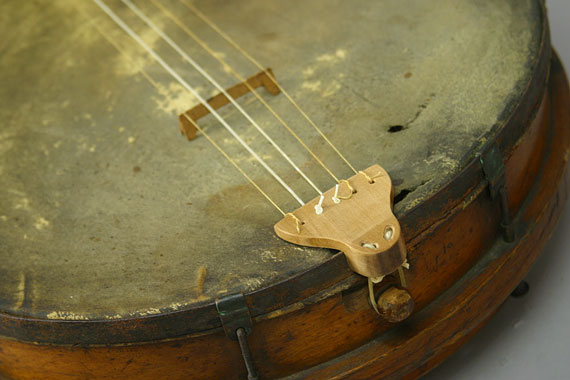
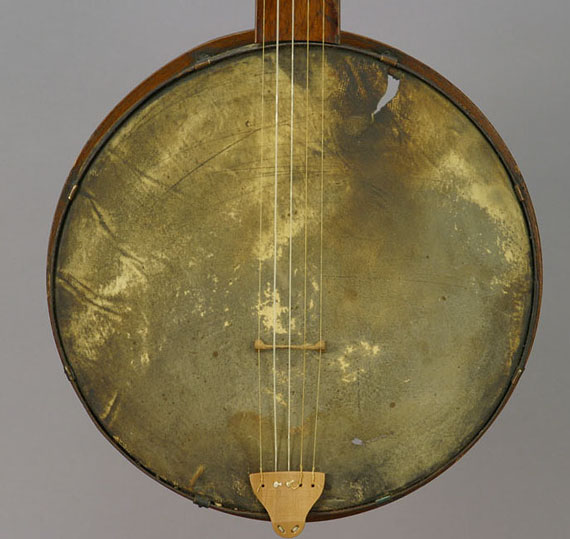
Some of the later Ashborns (late-1850s to the early 1860s) were amongst the first banjos to come equipped with frets, and with geared tuners. The famous minstrel, James Buckley, is pictured on the cover of his 1860 “New Banjo Method” holding what is possibly a fretted Ashborn banjo. The Buckleys were sophisticated musicians, and where known for bringing parodies of high opera to the minstrel stage – which perhaps necessitated the use of frets
The Ashborn’s most distinctive feature is the wooden bracket band – which eliminated the need for protruding bracket shoes – and protected the player’s clothing from snags. As originally designed, the countersunk bracket nuts were
adjusted with a square key. Surprisingly, neither the innovative bracket band, nor the unique 3-piece
brackets seem to be patented. A similar bracket band is also used on some English banjos of the period – and there are some questions as to who used it first. (And if Buckley was involved in the “technology transfer”, in some way.)
On this particular banjo, someone has soldered roundhead screws into the bracket nuts – to allow adjustment with a simple screwdriver. There is also evidence of some modifications – which suggest that someone may have used the rim
as a snare drum, at some point. (With the neck removed, we assume.) The trapezoidal-shaped 5th-string bump, with a back-to-front peg hole, identifies this Ashborn as an earlier example – probably from the mid-1850s. Later models have a more rounded shape to the bump, and usually have more brackets. The bump was also “updated” at some point, by drilling it for a later-style side mount peg.
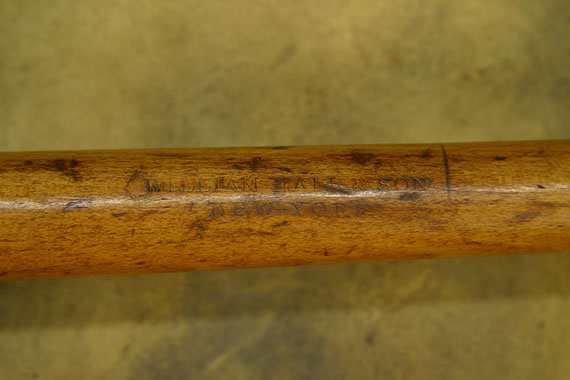
It has “J. Ashborn Patented 1852″ stamped on the back of the peghead, and was made for the firm of “William Hall & Son” – which is stamped onto the dowel. The neck and rim are basically original – except for the modified bracket nuts. The patented pegs, bridge, tailpiece, dowel tailblock, and dowel wedge, are reproductions. The small ivory triangle on the fingerboard is a later addition, as are various inscribed markings, and the modifications mentioned above.
The most intriguing feature of this banjo is the signature on the back of the neck. We can make out: “James A. Blan…” But it is very difficult to read the last letter(s) . It’s possible that the last name might be “Blane”. However, “James A. Bland” was a famous minstrel of the LATE-1800s – who wrote “Carry Me Back To Old Virginny” and “Golden Slippers” among other songs. The signature has NOT been positively identified as Bland’s. Why Bland would have owned such an old banjo – made around the time he was born – is also unknown. But it is fun to think about…
For more on James Ashborn, see: “America’s Instrument” by Gura and Bollman; and Phil Gura’s monograph, “Manufacturing Guitars for the American Parlor: James Ashborn’s Wolcottville, Connecticut, Factory 1851-1856″.
- – Ed Britt
http://www.frets.com/





